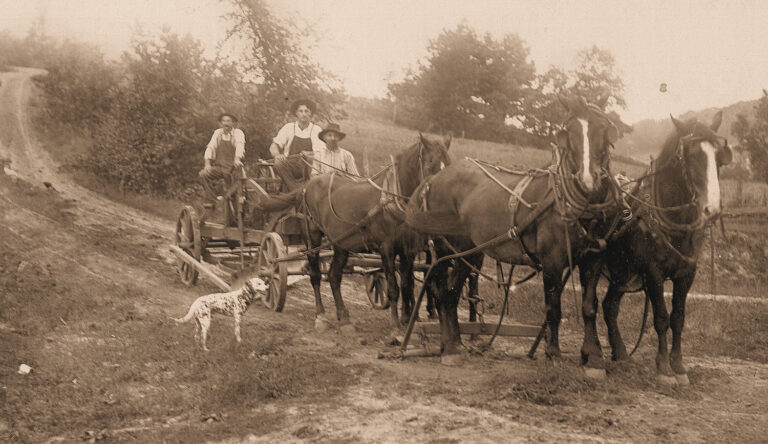Native American Trails
Native American trails were the method of overland travel for many hundreds of years, and one well-known Native American trail called the Grand Butte des Morts trail passed just to the south of Powell Spring. This trail (also known as the Green Bay-Portage trail) followed along the west shore of the Fox River, passing near present-day Oshkosh, and linking Green Bay with Fort Winnebago at Portage – very near the Wisconsin River. Along these ancient trails French trading posts were started, and Powell Spring was the location of one of these posts.
Many other trails branched off from this main trail, one going north to the Mascoutin Indian Village in Berlin, and another, known as the Marquette trail, ran through the site of the Bible Institute along the south shore of Green Lake and over to Lake Puckaway. This trail was named after Father Marquette who spent a few weeks at the Native American village on Lake Puckaway in 1673. Luther Gleason, who was an early trader in this area, started a trading post at this location around 1829.
As time went on these ancient trails became our thoroughfares – initially wagon trails, and then later, paved roads as we know them today. One, known as the Military Road, was one of the first roads to cross the state, connecting Fort Howard to Fort Winnebago and Prairie du Chien. It was built in 1835, passed south of Green Lake, and followed some of the old Butte des Morts trail. This road was not much more than a lane through timber and over prairie, but it did encourage settlers to come into this territory prior to Wisconsin becoming a state in 1848. Remains of this road still exist and are listed on the National Register of Historic Places.
Native American trails therefore played a very significant role in bringing settlers into the area in 1830’s and 40’s and gave us the location of many of our roads and highways as we know them today.



